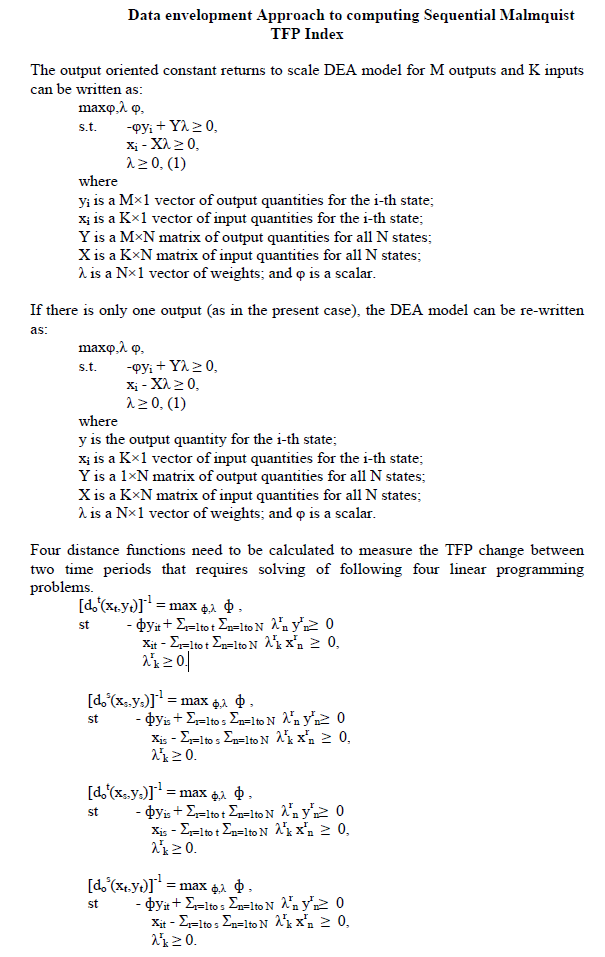|
 |
|
KonSi
Malmquist Index
SoftWare
T H E O R Y
&
A P P L I C A T I O N S |
Convenient program for your reseaches of dynamic efficiency by using Malmquist Index method

|
 Malmquist Index Software Malmquist Index Software
 Main Malmquist Index Methods Main Malmquist Index Methods
 User's Guide (Screenshots, Reports and etc.) User's Guide (Screenshots, Reports and etc.)
 Malmquist Index Bibliography Malmquist Index Bibliography
 Download Malmquist Index Software with User's Guide Download Malmquist Index Software with User's Guide
 Malmquist Index Software: Buy Now Malmquist Index Software: Buy Now
FoThere are several studies which point out decline in agricultural productivity in developing countries even in the years well-known for success of Green Revolution. The modified Malmquist TFP index- using Sequential/ Long memory technology, as proposed by Forstner and Isaksson (2002) and Nin et al (2003), attempts to rectify the biases in computation of productivity growth arising from non-neutral technical change. This study uses non-parametric Sequential Malmquist TFP Index to estimate changes in total factor productivity in Indian agriculture at state-level.rstner Helmut and Isaksson Anders (2002), “Productivity, Technology, and Efficiency: An analysis of the world technology frontier when memory is infinite”, SIN Working Paper Series, Working Paper no. 7, February 2002, Statistics and Information Networks branch of UNIDO.
Nin Alejandro, Arndt Channing, Preckel Paul V. (2003), “Is agricultural productivity in developing countries really shrinking? New evidence using a modified nonparametric approach”, Journal of Development Economics 71, p 395-415.
TRENDS IN TOTAL FACTOR PRODUCTIVITY IN INDIAN AGRICULTURE: STATE-LEVEL EVIDENCE USING NON-PARAMETRIC SEQUENTIAL MALMQUIST INDEX
SHILPA CHAUDHARY Working Paper No. 215 Centre for Development Economics Department of Economics, Delhi School of Economics

|